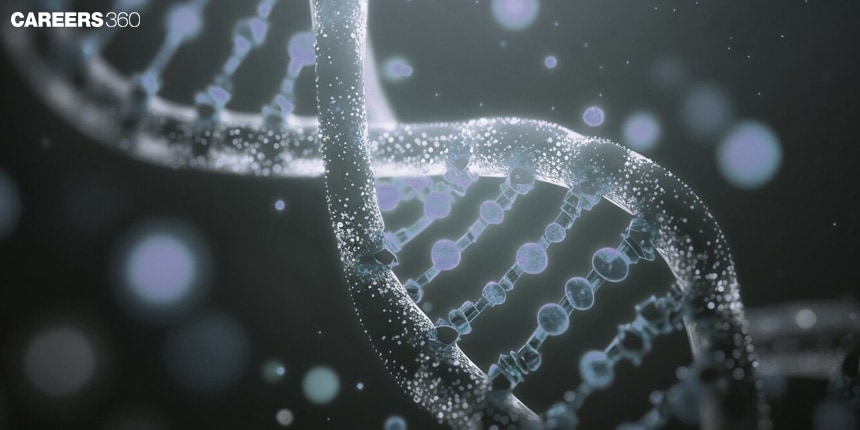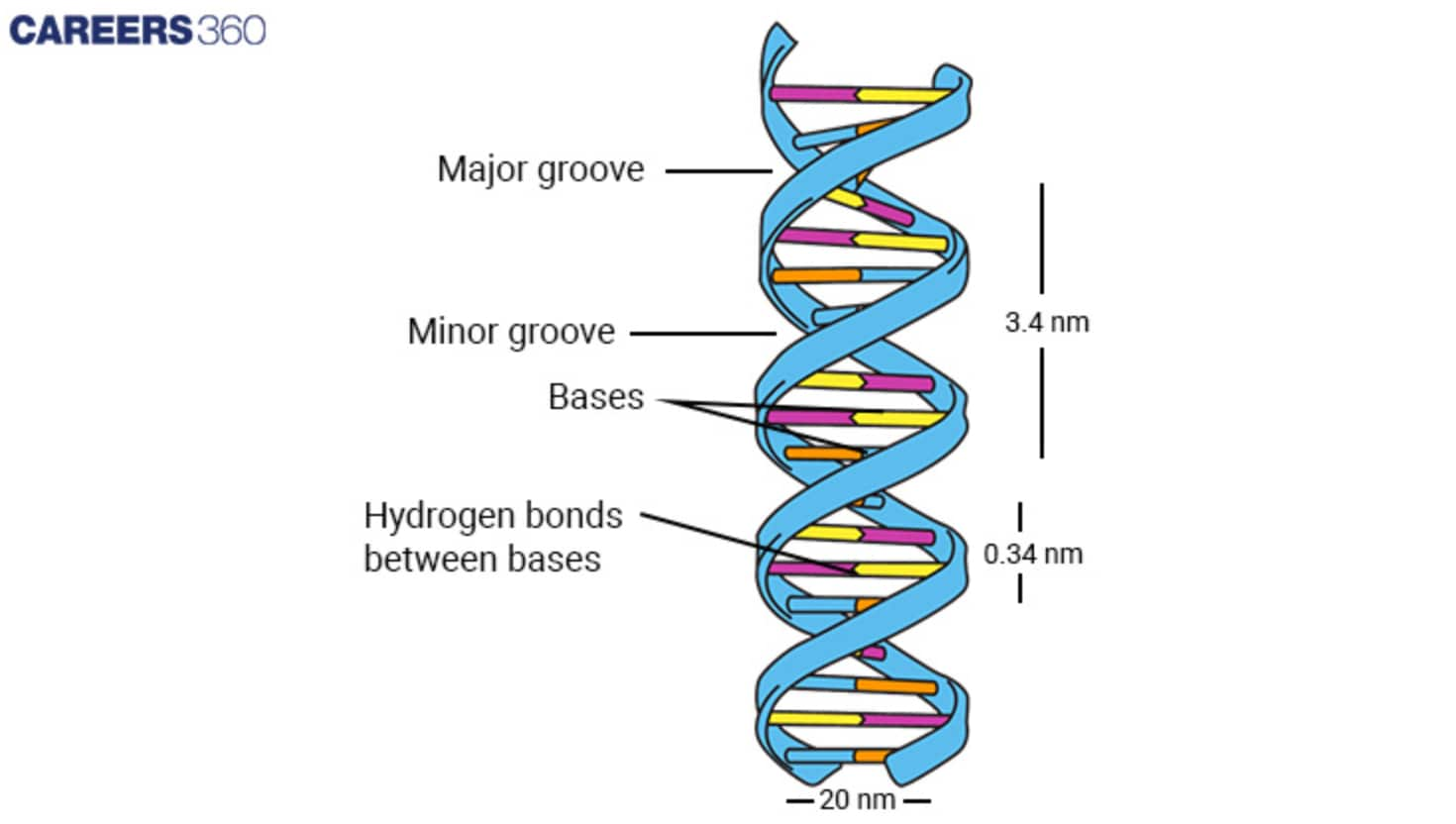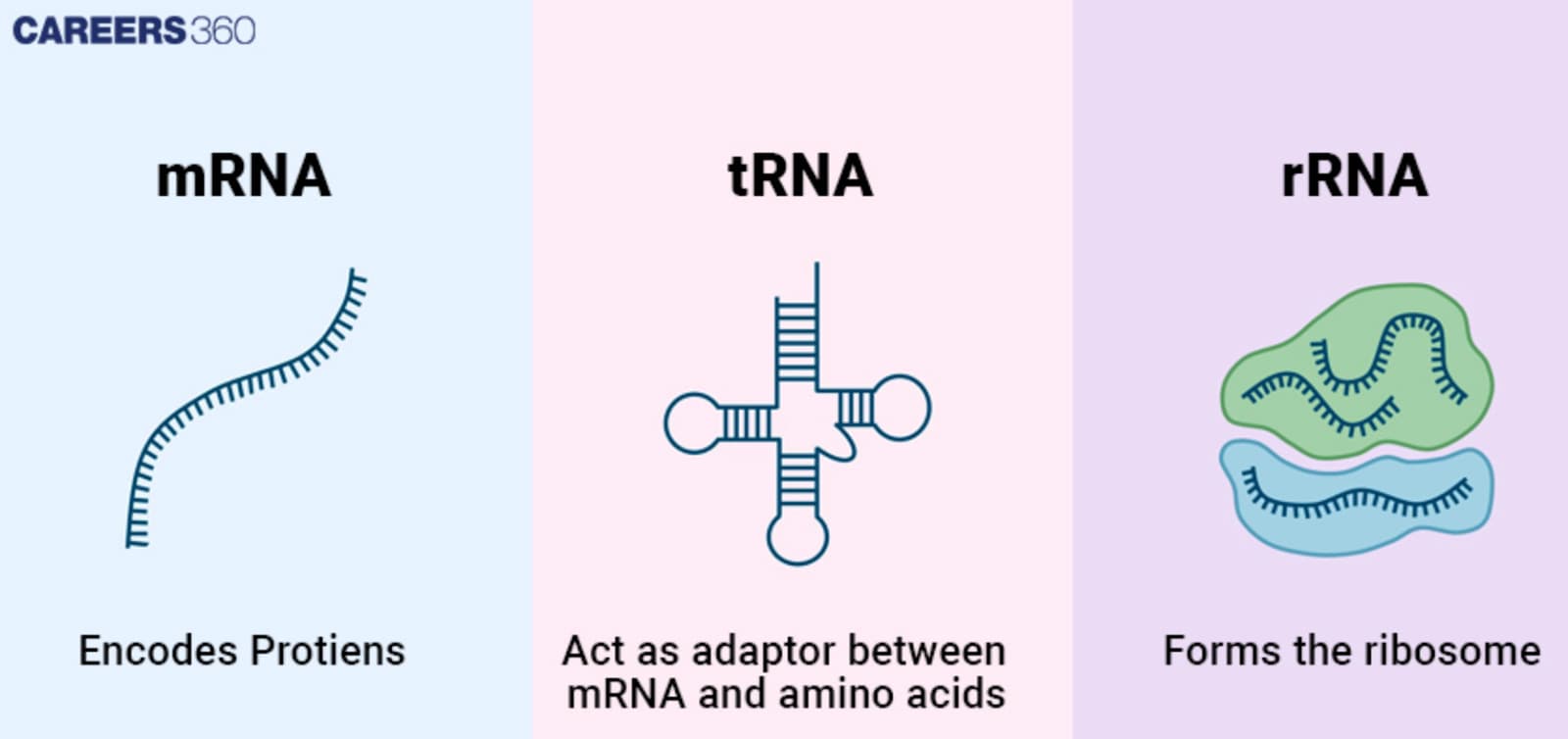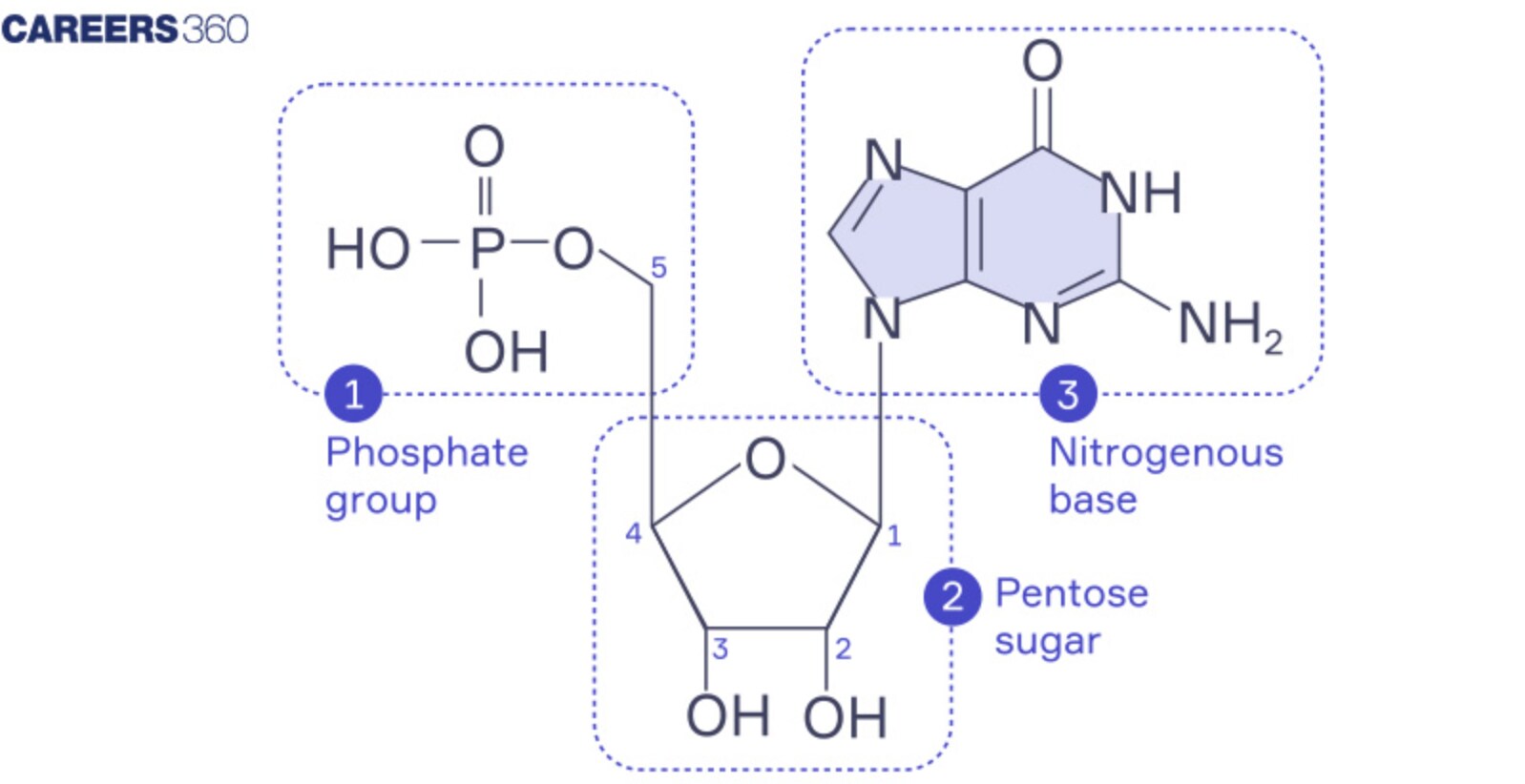Nucleic Acid and Genetic Code: Definition, Characteristics, Table, Facts, Properties
What are Nucleic Acids and Genetic Code?
Nucleic acids are giant molecules that are conclusively integral for all identified existence forms, the most innumerous being DNA or deoxyribonucleic acid and RNA or ribonucleic acid. Nucleic acids are the molecules that bear the DNA, the basis of such qualities as growth, development, and reproduction of living creatures. In biology, nucleic acids are significant because they contain and pass on messages and control the construction of proteins and these have most of the activities in a cell.
Don't Miss: Most scoring concepts for NEET | NEET papers with solutions
NEET 2025: Syllabus | PYQs | Crack NEET in 2 months - Study Plan
NEET Important PYQ & Solutions: Physics | Chemistry | Biology | NEET PYQ's (2015-24)

Genetic code is the instructions by which information contained in the DNA or RNA molecules is used to build a protein by cells of living organisms with the help of sets of three molecules of nucleotides known as codons.
Types of Nucleic Acids
The types of nucleic acids are given below
DNA (Deoxyribonucleic Acid)
Structure of DNA:
DNA structure is a double helix made up of two polynucleotide strands which are made up of a phosphate group, a sugar molecule (deoxyribose), and a nitrogenous base.
Function of DNA:
DNA uses the genetic data required in the growth, operation, and reproduction of all known living beings as well as many viruses.
Diagram: Double Helix Structure of DNA

RNA (Ribonucleic Acid)
Types of RNA (mRNA, tRNA, rRNA):
mRNA is a message RNA through which the hereditary information is transcribed for the formation of protein, tRNA is transported RNA which transports amino acid to the ribosome during protein synthesis and rRNA is the RNA constituent of the ribosome.
Structure of RNA:
RNA is more commonly singlestranded and is made of nucleotides comprising a phosphate group, a sugar molecule that is ribose, and a nitrogenous base.
Function of RNA:
RNA also has the function of synthesizing proteins and it is also involved in transferring genetic information in the form of DNA to proteins.
Diagram: Structure of Different RNA Types

Structure of Nucleic Acids
The structure of nucleic acids is listed below
Nucleotides: Building Blocks
Components of a nucleotide
Sugar In nucleotides the sugar can be deoxyribose such in DNA or it can be ribose in RNA. Deoxyribose has one less oxygen than ribose, which makes the deoxyribose molecule more stable than the ribose molecule and as a result suitable for building the DNA molecule.
Phosphate This group is formed by a P atom connected to four O atoms. This links the sugar molecules of two consecutive nucleotides hence forming the framework of the nucleic acid polymer.
Nitrogenous base Nitrogenous bases in nucleotides are of four types. In DNA they are adenine (A), thymine (T), cytosine (C), and guanine (G). In RNA, instead of Thymine, the uracil (U). These bases fit particularly (A with T/U, and C with G) to code genetic information.
Diagram: Structure of a Nucleotide

DNA vs. RNA: Structural Differences
Comparison Table: DNA vs. RNA
Feature | DNA | RNA |
Sugar | Deoxyribose | Ribose |
Strands | Doublestranded | Singlestranded |
Nitrogenous Bases | Adenine, Thymine, Cytosine, Guanine | Adenine, Uracil, Cytosine, Guanine |
The Genetic Code
The genetic code is discussed below:
Definition and Explanation
The genetic code is the set of rules that the living cells apply in the process of translating the information stored in the gene (DNA or RNA) into proteins. It also employs sequences of three units of nucleotides called codons to define which amino acids need to be included during the construction of the protein.
Characteristics of the Genetic Code
Universality:
Amazingly, the genetic code differs only in a very small percentage depending on the species; hence it suggests that species have evolved from a single ancestor.
Degeneracy:
More than one codon may code for the same amino acid; this provides an against mutation.
Nonoverlapping:
This way, since each of the nucleotides in the sequence is part of only one codon, the genetic message is read in a sequential and nonoverlapping manner.
Codons and Anticodons
They are sequences of three nucleotides located on the mRNA molecule that code for specific amino acids. Anticodon is a three nucleotide sequence on the tRNA that pairs with a codon during the process of translation or protein synthesis.
Diagram: Codon Table

Applications of Nucleic Acids
The applications are discussed below:
Genetic Engineering
In genetic engineering, nucleic acids are employed in altering the DNA of living beings. Other methods such as CRISPRCas9 enable scientists to bring genetic modifications for curing genetic diseases and improve crops for disease resistance.
Medical Diagnostics
In the diagnosis, nucleic acids are used for monitoring genetic diseases, infection, and the presence of cancer. Molecular methods like the PCR (Polymerase Chain Reaction) help to increase the amount of DNA and hence allow early and accurate identification of multiple diseases.
Biotechnology
As in pharmaceutical development, nucleic acids have a crucial function in the field of biotechnology. Renewable energy sources like biofuels, the production of GMOs genetically modified organisms. They are useful in the production of various goods and services amongst them being insulin, vaccines, and environmentally friendly bioenergy sources.
Recommended video for "Nucleic Acids"
Frequently Asked Questions (FAQs)
These are biomolecules predominantly DNA and RNA that are primarily involved in the communication of genetical information as well as the storage of information in living organisms. We can name their essential tasks as follows: information code, transfer, and implementation of the species hereditary information regulating cell’s development, functioning, and proliferation.
DNA (deoxyribonucleic acid) is a double helix type molecule that offers duties of longterm genetic information data storage in cells. RNA is mainly formed of a single chain and plays a part in decoding the information of DNA to create proteins. While DNA has deoxyribose as its sugar, RNA has ribose, and while DNA also has a base called thymine, the same position is occupied by uracil in RNA.
Genetic code is the regulations that govern the reading and interpretation of the message of an inherited trait in the DNA or RNA accompanying sequence to synthesize proteins. It does so in groups of three nucleotides called codons, that is three hydrolyzed nucleotide bases that are in code for a particular amino acid. If coded in mRNA these codons are read by the ribosomes that produce proteins by linking amino acids.
Many steps are involved in the process of DNA replication which include the following:
1. Initiation: Helicase is the enzyme that gets involved in the process of unwinding the DNA double helix.
2. Elongation: DNA polymerase then synthesizes the other halves of the original strands which completes two more new strands of DNA.
3. Termination: As involved in the process of replication it goes on till a time that one complete strand of the original DNA molecule has been replicated and two new molecules of DNA have been synthesized.
Nucleic acids have many functions in the growing field of biotechnology based on the following purposes:
1. Genetic engineering: The process of bringing such changes into the organism's genetic structure to advance some feature or make a wanted commodity.
2. Medical diagnostics: Consequently, PCR makes diagnosis of genetic disorders, infection, and cancer at early stages possible.
3. Pharmaceuticals: Method of developing medicines through the genetic material to develop new drugs, vaccines, and therapeutic agents.
Also Read
29 Nov'24 09:31 AM
19 Nov'24 09:26 AM
18 Nov'24 06:45 PM
18 Nov'24 09:29 AM
18 Nov'24 09:18 AM
18 Nov'24 09:01 AM
18 Nov'24 08:37 AM
16 Nov'24 03:45 PM